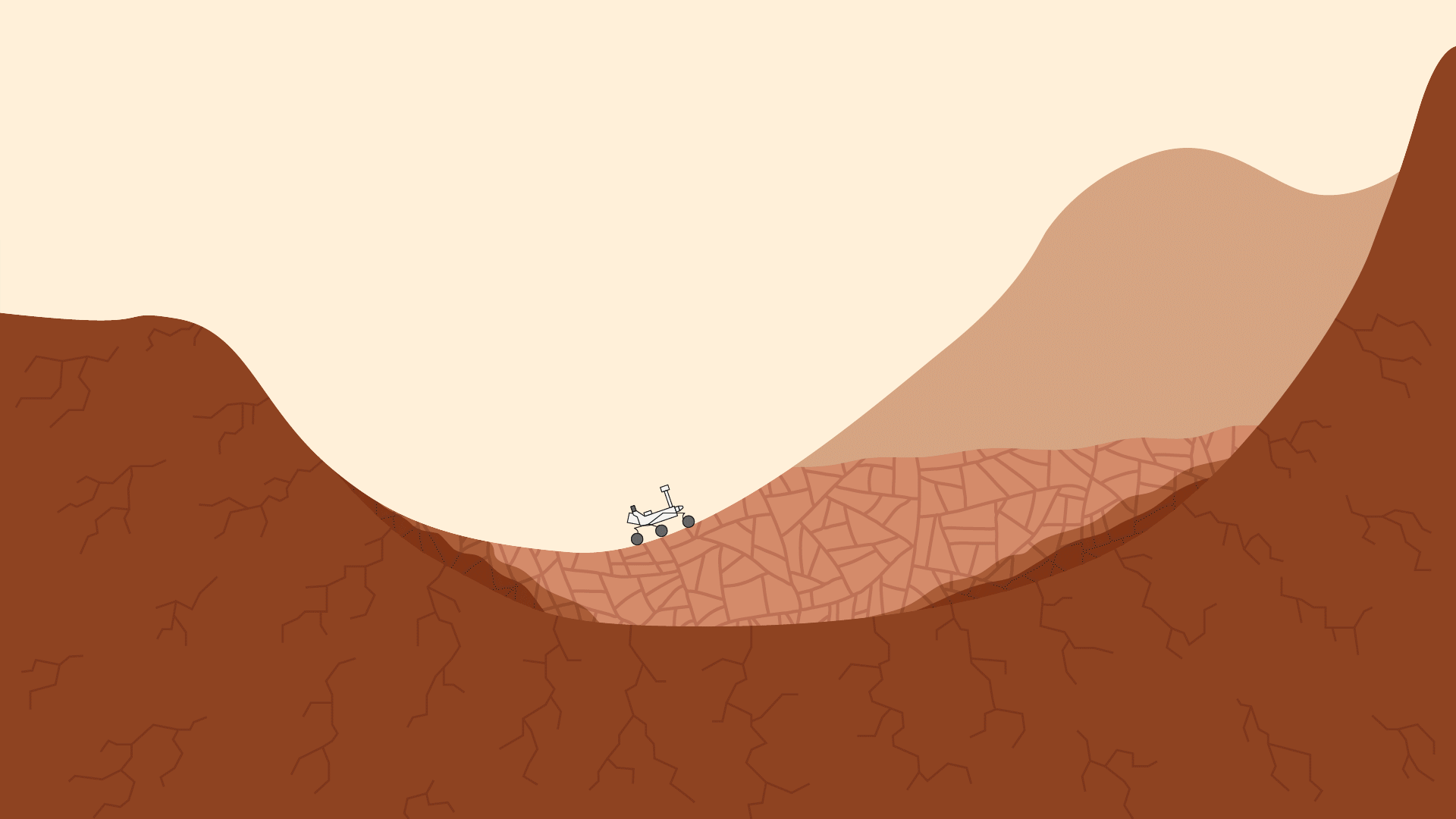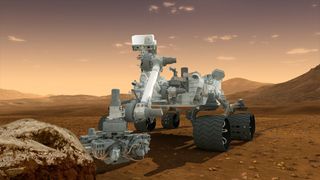
The window of opportunity for life to arise on ancient Mars was apparently broader than scientists had thought.
The lake that once filled much of Mars' huge Gale Crater featured multiple potentially habitable environments segregated by depth, as some water bodies here on Earth do, a new study based on observations by NASA's Curiosity rover suggests.
"This chemical stratification might've provided a sort of menu of options for any microbes that preferred one environment over the other to take advantage of," study lead author Joel Hurowitz, a geoscientist at Stony Brook University in New York, told Space.com. [Photos: Ancient Mars Lake Could Have Supported Life]
"What we're learning is that all of the necessary ingredients for life to take hold were present inside this lake in Gale Crater," Hurowitz added. "For us, that's a really exciting result."
Multiple niches
The car-size Curiosity rover touched down inside the 96-mile-wide (154 kilometers) Gale Crater in August 2012, on a mission to determine if the region has ever been capable of supporting microbial life.
Curiosity quickly hit pay dirt, finding lots of evidence that Gale harbored a possibly habitable lake-and-stream system in the ancient past. Further observations by the rover have revealed that this system likely lasted from about 3.8 billion years ago to 3.1 billion years ago, though it's unclear if surface water was present continuously during that stretch. (The lake may have dried out and refilled multiple times, mission scientists have said.)
Hurowitz and his colleagues characterized Gale's ancient lake in great detail by analyzing geochemical and mineralogical data Curiosity gathered on lakebed rock during the rover's first 1,300 Martian days. (One Red Planet day, or sol, is slightly longer than an Earth day, lasting about 24 hours and 40 minutes.)
Get the Space.com Newsletter
Breaking space news, the latest updates on rocket launches, skywatching events and more!

These observations spanned about 330 vertical feet (100 meters) of rock deposits, a thickness that Hurowitz said would take up to 10 million years to form at the bottom of an Earth lake.
The data revealed that the Gale Crater lake environment was chemically stratified by depth: There were far more oxidants — substances that strip electrons away from reactants during a chemical reaction — near the surface than deep down, the researchers said.
As the name suggests, oxygen is a common oxidant.
"From an Earth perspective, we can think of the shallow-water part of this lake as maybe having been rich in dissolved oxygen," Hurowitz said. "And the deeper-water part of the lake was obviously very poor in oxidants, or very poor in oxygen."
Here on Earth, oxygen-rich and oxygen-poor habitats tend to support very different types of organisms; indeed, many anaerobic microbes die when exposed to the oxygen concentrations that humans are used to.
So the new study, which was published online today (June 1) in the journal Science, should be of interest to astrobiologists, Hurowitz said.
"We just increased the number of potential opportunities within this lake for life to either take hold, or try to," he said. [The Life on Mars Search: Photo Time Line]

A changing climate
The researchers were able to learn other interesting things from Curiosity's data as well.
For example, the oldest lakebed deposits are similar in chemical composition to sedimentary rocks that formed in very cold climates here on Earth. And the more recent Gale lakebed stones resemble Earth rocks that took shape in more temperate environments.
So it appears that Mars was quite cold when the Gale Crater lake first formed, and the planet then began to warm up, Hurowitz and his colleagues said.
In addition, Curiosity also spotted evidence that, after the lakebed sediments had hardened into rock, they were modified by some sort of salty liquid flowing over them. This observation could help researchers better understand Mars' shift from a relatively warm and wet world to the cold and dry planet we know today — a transition that scientists tie to the loss of the Red Planet's atmosphere, the vast majority of which was stripped away by solar particles more than 3 billion years ago.
"Perhaps those salty brines were formed because Mars' atmosphere was drying up and being lost to space," Hurowitz said. The data that Curiosity has collected so far don't allow the mission team to nail down when exactly these brines were flowing, he added.
Curiosity continues to explore Mars. Since September 2014, the six-wheeled robot has been slowly climbing through the foothills of Mount Sharp, which rises 3.4 miles (5.5 kilometers) into the Red Planet's sky from Gale's center.
Curiosity is reading Mount Sharp's rock layers for clues about Mars' climate evolution, and further discoveries are sure to come. But whatever the future may hold, the rover has already succeeded in reshaping scientists' understanding of the Red Planet, and made at least parts of it seem familiar to us, Hurowitz said.
Gale Crater "looks like an ancient environment that's not so alien to us," he said. "It really kind of looks like a freshwater lake just about anywhere on the surface of the Earth."
Follow Mike Wall on Twitter @michaeldwall and Google+. Follow us @Spacedotcom, Facebook or Google+. Originally published on Space.com.
Join our Space Forums to keep talking space on the latest missions, night sky and more! And if you have a news tip, correction or comment, let us know at: community@space.com.

Michael Wall is a Senior Space Writer with Space.com and joined the team in 2010. He primarily covers exoplanets, spaceflight and military space, but has been known to dabble in the space art beat. His book about the search for alien life, "Out There," was published on Nov. 13, 2018. Before becoming a science writer, Michael worked as a herpetologist and wildlife biologist. He has a Ph.D. in evolutionary biology from the University of Sydney, Australia, a bachelor's degree from the University of Arizona, and a graduate certificate in science writing from the University of California, Santa Cruz. To find out what his latest project is, you can follow Michael on Twitter.
